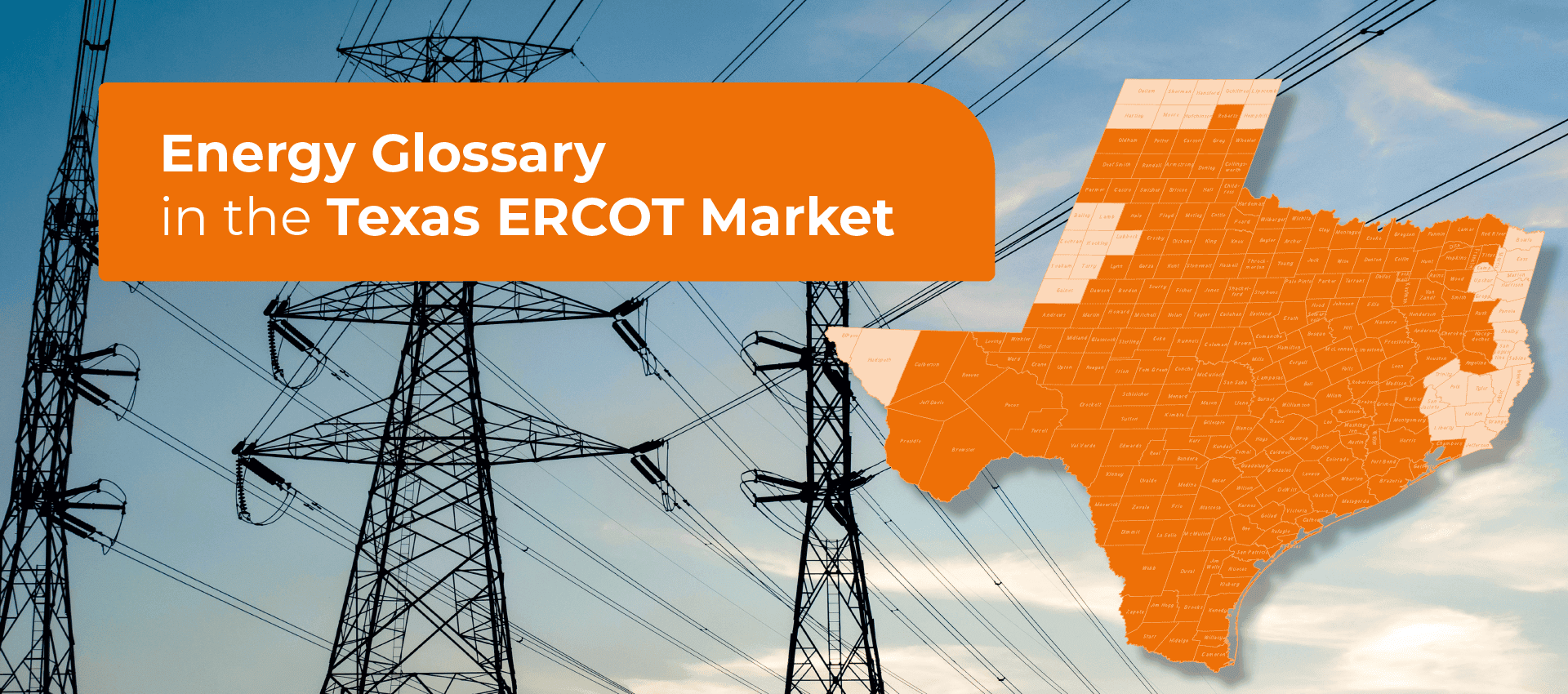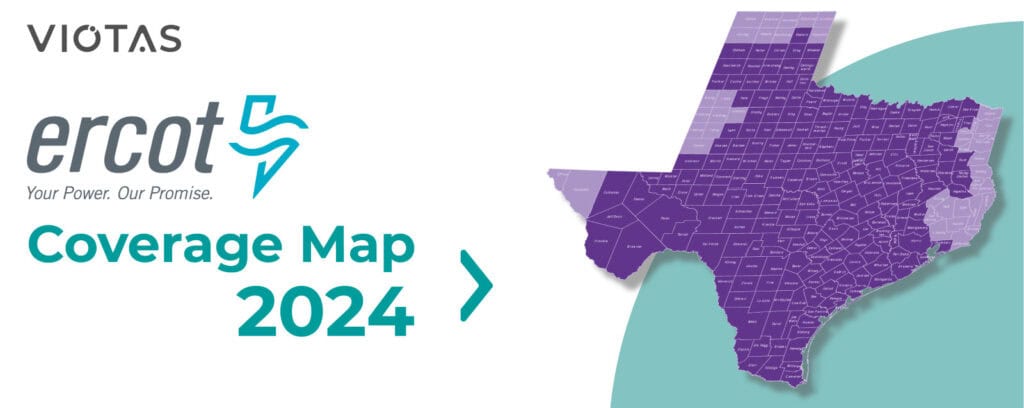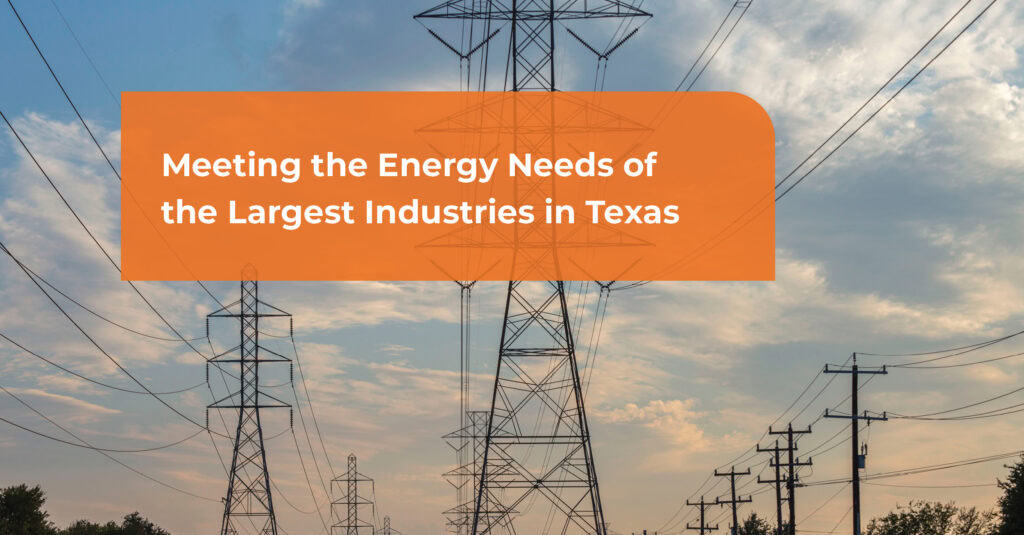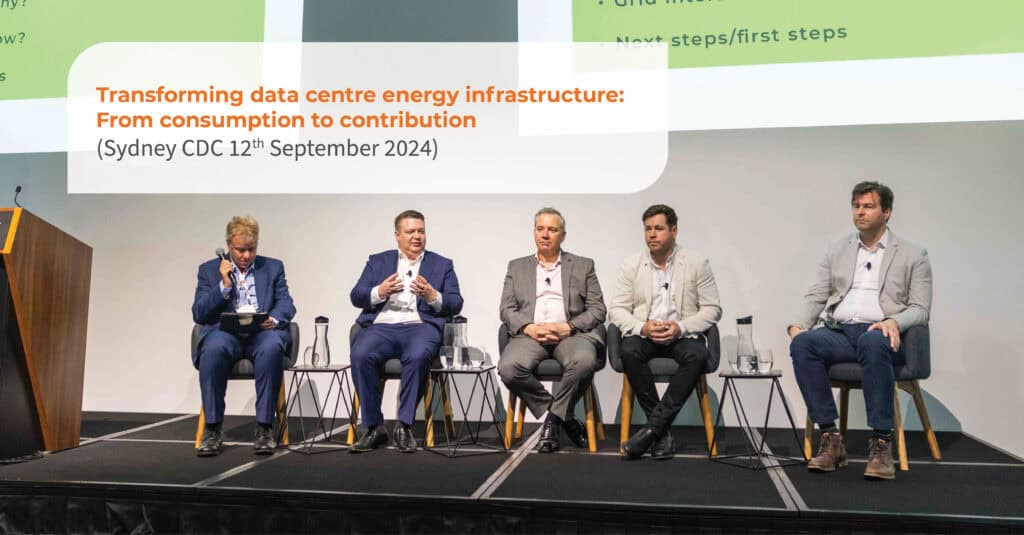
Energy Glossary in the Texas ERCOT Market
The Texas energy landscape, governed by the Electric Reliability Council of Texas (ERCOT), is unique. As the sole independent grid operator for 90% of Texas’s electric load, ERCOT operates outside the jurisdiction of the Federal Energy Regulatory Commission (FERC), creating a distinct market structure.

Understanding the terminology used in this market is critical for stakeholders—whether they are energy professionals, investors, or consumers. This glossary provides a detailed explanation of the most critical terms in the ERCOT market, explaining how these concepts shape grid operations, market dynamics, and the future of Texas energy.
Aggregate Load Resource (ALR)
Aggregate Load Resource (ALR)
An Aggregate Load Resource (ALR) is a collection of smaller individual loads, typically under 10 MW, that can be aggregated to function as a single, larger resource. ALRs participate in demand response programs, helping ERCOT balance supply and demand by reducing or shifting electricity consumption. These resources are crucial for grid stability, especially in periods of high demand.
Ancillary Services
Ancillary Services
Ancillary services are the backbone of grid stability in ERCOT. These services ensure the balance of supply and demand in real time, mitigate grid congestion and maintain operational reliability. Examples include regulation services, reserves, and contingency services, which are critical during periods of high demand or unexpected supply shortages. Ancillary services are vital to grid reliability and are procured through ERCOT’s day-ahead market.
Competitive Retailers (CRs)
Competitive Retailers (CRs)
Competitive Retailers (CRs) are entities that sell electricity directly to consumers in Texas’s deregulated electricity market. CRs can take two forms:
- Retail Electric Providers (REPs): These companies sell electricity to retail customers and contract with Qualified Scheduling Entities (QSEs) to manage the scheduling of electricity for their customers’ needs. REPs compete in the market, offering various plans and pricing options to consumers.
- Opt-In Municipally Owned Utilities (MOUs) or Electric Cooperatives (ECs): These are utilities or cooperatives that have chosen to participate in the competitive market, offering Customer Choice to their consumers, allowing them to select from different electricity providers.
Controllable Load Resource (CLR)
Controllable Load Resource (CLR)
A Controllable Load Resource (CLR) is a large-scale industrial or commercial load that can actively participate in ERCOT’s real-time market. These loads respond dynamically to grid operator instructions by reducing or increasing power consumption as needed. CLRs are key to balancing the grid during peak demand or emergencies, adding flexibility to ERCOT’s energy supply system.
Congestion Revenue Rights (CRRs)
Congestion Revenue Rights (CRRs)
Congestion Revenue Rights (CRRs) allow market participants to hedge against the cost of transmission congestion. In ERCOT’s nodal market, electricity prices fluctuate across the grid due to congestion. CRRs provide a financial mechanism to mitigate the risks of price differences between nodes, helping stabilize costs for energy providers and consumers. CRRs are critical for managing transmission congestion and optimizing electricity delivery.
Day-Ahead Market (DAM)
Day-Ahead Market (DAM)
The Day-Ahead Market (DAM) in ERCOT is a forward electricity market where participants buy and sell power for delivery the next day. It allows market participants, like generators and retailers, to lock in electricity prices and quantities in advance, providing price certainty and improving grid reliability. The DAM operates through a bid-based system where supply and demand are matched, optimizing costs and managing transmission constraints. Prices are determined using Locational Marginal Pricing (LMP), reflecting the cost of delivering electricity to specific locations. The DAM helps ERCOT plan for next-day energy needs, reducing real-time price volatility and supporting grid stability.
Demand Response (DR)
Demand Response (DR)
Demand Response (DR) plays a pivotal role in ERCOT’s grid management. It allows consumers—ranging from industrial facilities to residential households—to adjust their electricity usage in response to market signals or grid operator requests. DR helps prevent grid overloads during high-demand periods by reducing consumption and offering an alternative to additional generation. Demand-side management through DR programs enhances grid reliability and contributes to price stabilization.
Distributed Energy Resources (DERs)
Distributed Energy Resources (DERs)
Distributed Energy Resources (DERs) refer to decentralized, smaller-scale energy generation or storage systems, such as solar panels, wind turbines, and battery storage. DERs contribute to local energy generation, reduce the strain on the centralized grid, and enhance grid resilience. As Texas integrates more renewable energy into its electricity mix, DERs become increasingly important for stabilizing the grid and meeting energy demand in a sustainable way.
Electric Cooperatives (ECs)
Electric Cooperatives (ECs)
Electric Cooperatives (ECs) are member-owned, not-for-profit organizations that provide electricity to their members, typically in rural or less densely populated areas. Each member is both a customer and part-owner of the cooperative, with voting rights on governance matters. ECs operate to deliver reliable, affordable electric service to their communities rather than to generate profit. They may choose whether to participate in the competitive retail electricity market. If they do not opt-in, they function as Non-Opt-In Entities (NOIEs) and do not offer Customer Choice.
Electric Reliability Council of Texas (ERCOT)
Electric Reliability Council of Texas (ERCOT)
The Electric Reliability Council of Texas (ERCOT) oversees the Texas electricity market, ensuring reliable power for over 26 million Texans. ERCOT manages the flow of electricity, balancing real-time demand with supply, and facilitating a competitive wholesale electricity market. Unlike other markets in the U.S., ERCOT operates independently of the Federal Energy Regulatory Commission (FERC), giving it unique authority and flexibility in managing the state’s power grid.
Energy-Only Market
Energy-Only Market
ERCOT operates as an energy-only market, meaning that power generators are compensated solely for the electricity they produce, without additional payments for being available. This model uses real-time price signals to encourage generation investment, especially during times of scarcity, when demand spikes. In an energy-only market, price volatility can be higher, but it incentivizes efficient grid operation and timely generation capacity investment.
Energy Storage Resource (ESR)
Energy Storage Resource (ESR)
An Energy Storage Resource (ESR) consists of large-scale battery systems that store excess electricity and release it during periods of high demand. ESRs act as both generation resources (GRs) when discharging energy and controllable load resources (CLRs) when charging. ESRs are key in managing the intermittent supply from renewable energy sources like wind and solar, helping ERCOT maintain a stable supply of electricity.
ERCOT Contingency Reserve Service (ECRS)
ERCOT Contingency Reserve Service (ECRS)
ERCOT Contingency Reserve Service (ECRS) is a form of emergency reserve capacity that can be activated within 10 minutes to address sudden shortfalls in electricity supply. ECRS is crucial during unforeseen circumstances such as generation trips or forecasting errors. By quickly deploying reserves, ECRS helps prevent grid instability and ensures continuous service for consumers.
Load Serving Entities (LSEs)
Load Serving Entities (LSEs)
Load Serving Entities (LSEs) are organizations responsible for supplying electricity to both individual consumers and wholesale customers. LSEs include various types of electricity providers, such as Competitive Retailers (CRs), which operate in Texas’s deregulated market, and Non-Opt-In Entities (NOIEs), which typically serve areas not participating in retail competition. LSEs manage the purchase and delivery of electricity from the wholesale market to end-users, ensuring reliable service while meeting customer demand. They are key players in balancing market supply and customer demand within the ERCOT system.
Locational Marginal Pricing (LMP)
Locational Marginal Pricing (LMP)
Locational Marginal Pricing (LMP) is a method of pricing electricity based on the actual cost to deliver power to specific locations on the grid, factoring in generation, transmission, and congestion. In ERCOT’s nodal market, LMP helps optimize the dispatch of electricity across the grid by reflecting real-time supply and demand dynamics and transmission constraints. LMP plays a crucial role in managing congestion and ensuring grid efficiency.
Municipally Owned Utilities (MOUs)
Municipally Owned Utilities (MOUs)
Municipally Owned Utilities (MOUs) are local government-owned entities that generate, transmit, and distribute electricity to customers within a specific municipality or region. MOUs operate as non-profit organizations, with the primary goal of providing reliable and affordable electric service to the community they serve. Unlike Competitive Retailers, MOUs are typically regulated by local governments and may choose whether to participate in the competitive retail electricity market. If they do not opt-in to market competition, they operate as Non-Opt-In Entities (NOIEs) and do not offer Customer Choice to their consumers.
Non-Controllable Load Resource (LR)
Non-Controllable Load Resource (LR)
A Non-Controllable Load Resource (LR) refers to large loads that automatically reduce consumption when specific conditions—like low grid frequency—are met. Unlike CLRs, LRs do not require active management in real-time but are programmed to respond to grid emergencies. LRs help ERCOT quickly stabilize the grid during imbalances, preventing outages or supply shortages.
Non-Opt-In Entities (NOIEs)
Non-Opt-In Entities (NOIEs)
Non-Opt-In Entities (NOIEs) are Municipally Owned Utilities (MOUs) and Electric Cooperatives (ECs) that have chosen not to participate in the competitive retail electricity market. Unlike Competitive Retailers (CRs), NOIEs do not offer Customer Choice, meaning their customers cannot select their electricity provider from the competitive market. These entities continue to provide electric service under a regulated model, maintaining control over both the generation and distribution of electricity to their customers.
Non-Spin Reserve Service (NSRS or NSPIN or NSPS)
Non-Spin Reserve Service (NSRS or NSPIN or NSPS)
Non-Spin Reserve Service (NSRS or NSPIN or NSPS) provides backup power that can be made available within 30 minutes to cover unexpected supply-demand mismatches. NSRS is part of ERCOT’s ancillary services, ensuring that there is sufficient capacity to meet demand, especially when unforeseen events disrupt the grid. NSRS plays an essential role in maintaining grid reliability during periods of generation loss or forecast errors.
Nodal Market
Nodal Market
ERCOT’s nodal market divides the Texas grid into numerous locations (nodes) where the price of electricity is determined by the local balance of supply and demand. The nodal pricing system optimizes resource allocation by providing transparent, location-based pricing. This model helps reduce transmission congestion and signals where additional generation or transmission infrastructure investments are needed.
Operating Reserve Demand Curve (ORDC)
Operating Reserve Demand Curve (ORDC)
The Operating Reserve Demand Curve (ORDC) is a pricing tool designed to ensure ERCOT has enough reserves to meet unexpected changes in supply and demand. As the supply of reserves decreases, the price ERCOT is willing to pay increases, incentivizing more generators to provide reserve capacity. The ORDC is particularly important during periods of scarcity, where demand exceeds supply, helping to prevent shortages.
Qualified Scheduling Entity (QSE)
Qualified Scheduling Entity (QSE)
A Qualified Scheduling Entity (QSE) is a market participant certified by ERCOT to communicate and interact on behalf of Resource Entities (REs), such as power generators, and Load Serving Entities (LSEs), like retail electric providers (REPs). QSEs handle the submission of bids and offer in both the Day-Ahead and Real-Time Markets, representing their client’s interests in buying or selling energy. They are also responsible for submitting Current Operating Plans for the resources they manage and coordinating Ancillary Services to ensure grid reliability. In addition, QSEs manage all financial settlements with ERCOT on behalf of the entities they represent, ensuring proper payment and charge reconciliations.
Real-Time Market (RTM)
Real-Time Market (RTM)
ERCOT’s Real-Time Market (RTM) operates on a near-instantaneous basis, with prices updated every 15 minutes to reflect current supply and demand conditions. The RTM allows market participants to adjust their generation or consumption based on actual grid conditions, offering flexibility and efficiency in grid management. While the Day-Ahead Market (DAM) offers price certainty for future periods, the RTM ensures ERCOT can respond dynamically to real-time changes.
Regulation Service
Regulation Service
Regulation Service is a type of ancillary service that helps ERCOT maintain grid frequency by balancing small fluctuations in supply and demand. ERCOT deploys regulation services every few seconds to ensure the grid remains stable.
- Regulation Up: Increases generation to maintain frequency.
- Regulation Down: Reduces generation when the frequency is too high.
These services are vital for keeping ERCOT’s electricity supply and demand in perfect sync.
Renewable Portfolio Standard (RPS)
Renewable Portfolio Standard (RPS)
Texas’s Renewable Portfolio Standard (RPS) requires a certain percentage of electricity generated in the state to come from renewable energy sources like wind and solar. The RPS has been instrumental in positioning Texas as a national leader in wind energy, driving investment in renewable infrastructure and promoting a greener energy future for the state.
Resource Entity (RE)
Resource Entity (RE)
A Resource Entity (RE) is an entity that owns or controls one or more types of resources in the ERCOT system, including Generation Resources (such as power plants), Load Resources (which can reduce electricity usage on demand), and/or Non-Modeled Generators (smaller generation units not fully represented in the grid’s detailed models). Resource Entities are registered with ERCOT and play a critical role in ensuring the availability of electricity supply and demand management on the grid. They participate in the energy market by providing generation capacity, reducing load when needed, or operating smaller generation units to support grid stability.
Responsive Reserve Service (RRS)
Responsive Reserve Service (RRS)
Responsive Reserve Service (RRS) is a type of fast-acting reserve that can be deployed quickly to address sudden imbalances in the ERCOT grid. RRS ensures that the grid remains stable even when a generator trips offline or when there are unexpected fluctuations in demand. This reserve is essential for preventing large-scale disruptions and maintaining system reliability.
Retail Electric Providers (REPs)
Retail Electric Providers (REPs)
In the deregulated Texas electricity market, Retail Electric Providers (REPs) purchase power from the wholesale market and sell it to consumers. Consumers have the freedom to choose their REP, fostering competition and innovation in energy services. REPs offer a range of plans, including those that focus on renewable energy or variable pricing, empowering consumers to tailor their electricity consumption to their needs.
Scarcity Pricing
Scarcity Pricing
Scarcity Pricing refers to the mechanism in ERCOT’s energy-only market where prices rise dramatically during periods of supply shortage. In these situations, electricity prices can spike to the market cap of $5,000 per megawatt-hour. Scarcity pricing incentivizes generators to come online and invest in capacity during critical times, ensuring that supply meets demand even during emergencies.
System-Wide Offer Cap (SWOC)
System-Wide Offer Cap (SWOC)
The System-Wide Offer Cap (SWOC) is the maximum price generators can charge for electricity during scarcity events, currently set at $5,000 per megawatt-hour. This cap helps balance the need to incentivize generation during periods of shortage with the goal of protecting consumers from excessive price spikes. The SWOC plays a central role in managing price volatility in the ERCOT market.
Transmission and Distribution Service Providers (TDSPs)
Transmission and Distribution Service Providers (TDSPs)
Transmission and Distribution Service Providers (TDSPs) manage the infrastructure that delivers electricity from the high-voltage transmission grid to homes and businesses. TDSPs are responsible for the physical maintenance of power lines, poles, and substations. They ensure that electricity distribution is reliable, working closely with ERCOT to ensure that the grid operates efficiently.
Weatherization
Weatherization
Weatherization involves preparing the power generation and transmission infrastructure to withstand extreme weather conditions, such as the freezing temperatures experienced during Texas’s 2021 winter storm. ERCOT’s updated weatherization standards aim to ensure that power plants and grid components can continue operating under severe conditions, thereby enhancing the grid’s resilience and reliability.




